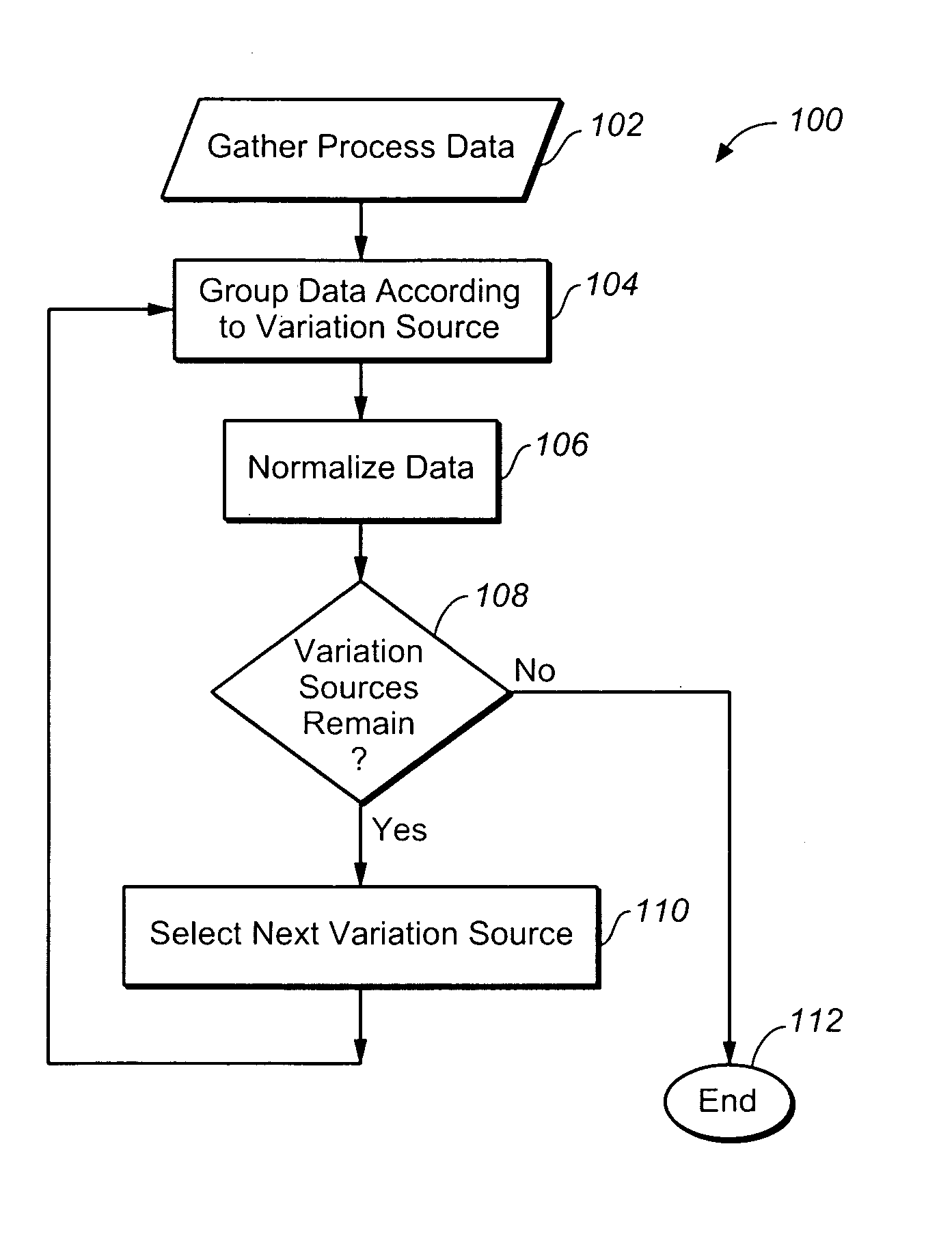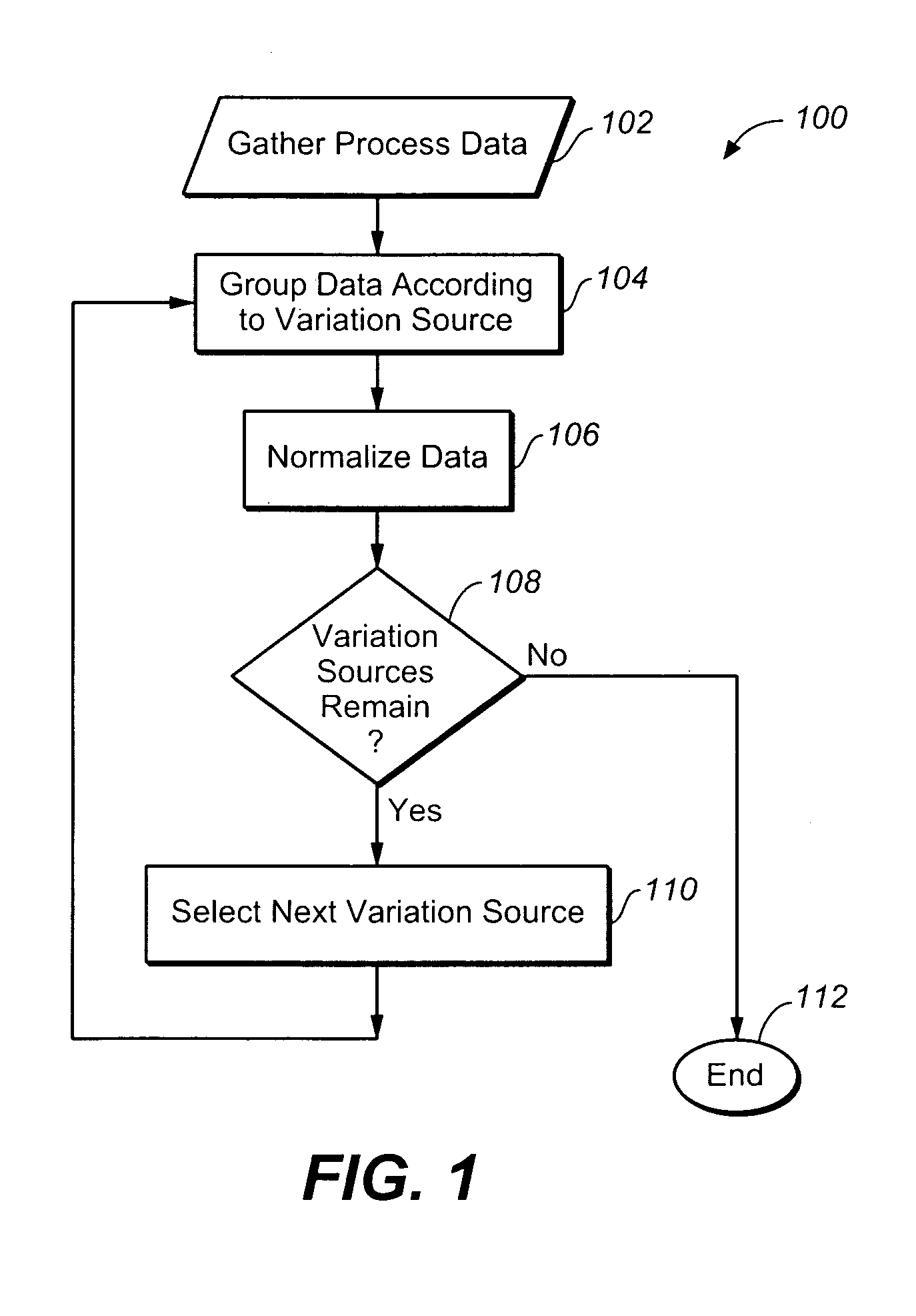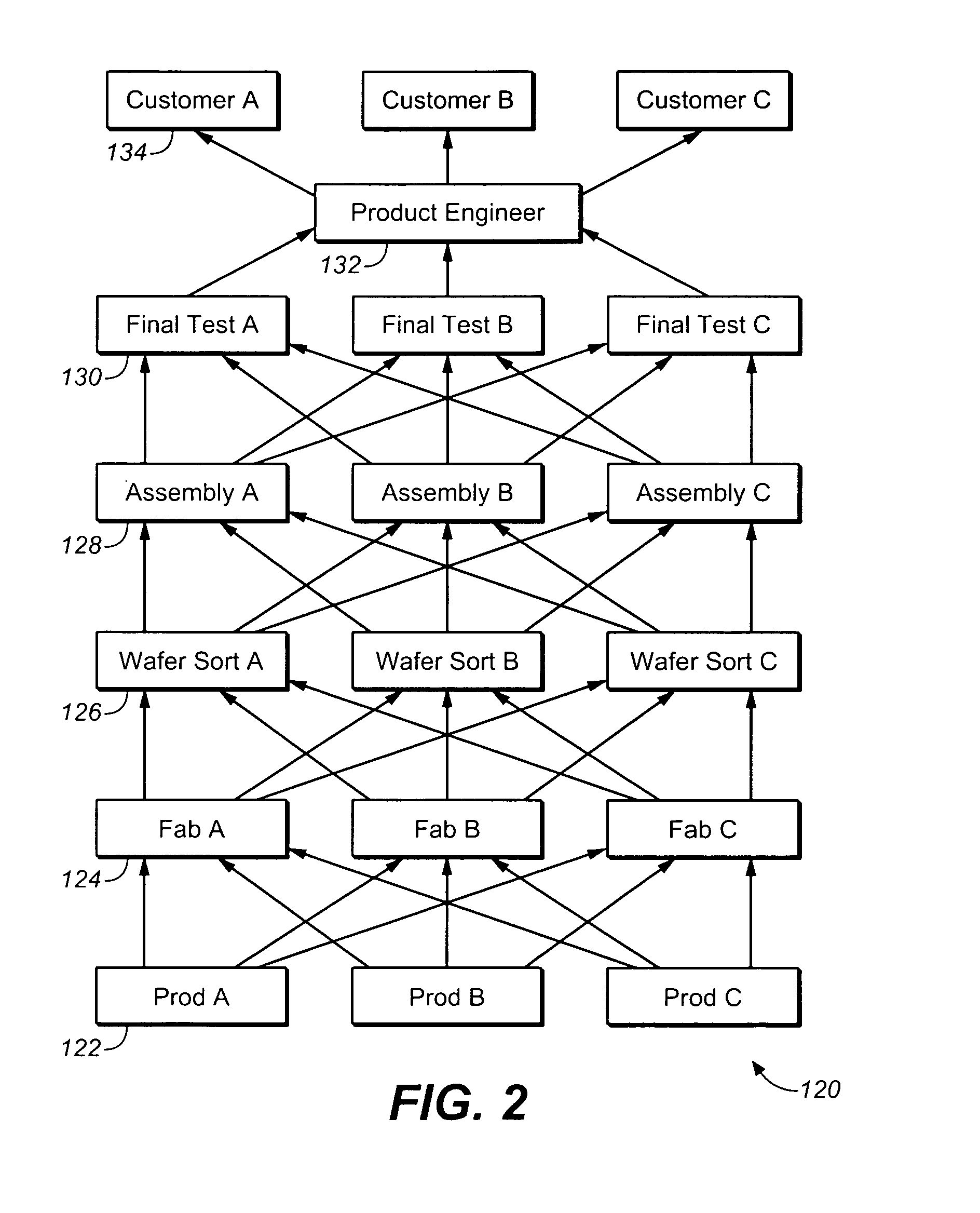Method for analyzing manufacturing data
a manufacturing data and data analysis technology, applied in the field of manufacturing data analysis, can solve the problems of difficult isolating any one out-of-spec source, no two chips are identical, and modern semiconductor manufacturing processes are very complex, and achieve the effect of increasing the amount of data availabl
- Summary
- Abstract
- Description
- Claims
- Application Information
AI Technical Summary
Benefits of technology
Problems solved by technology
Method used
Image
Examples
Embodiment Construction
[0030]The reduction in the amount of available data for correlating process parameter variations with individual sources of the process parameter variations described above may be avoided by a way to correlate process parameter variations to individual sources of those variations using the entire population of characterization data as follows.
[0031]Turning now to the drawings and more particularly, FIG. 1 shows a method 100 of selectively removing a source of product variation so that an entire collection of process data may be used to identify additional sources of process variation. Each process step may affect the mean value of a parameter or increase the variance of the parameter. For any manufacturing process wherein each process step contributes to product variations additively, the preferred embodiment method 100 selectively removes variation sources for enhanced analysis. Although described hereinbelow with reference to integrated circuits and semiconductor manufacturing, th...
PUM
 Login to View More
Login to View More Abstract
Description
Claims
Application Information
 Login to View More
Login to View More - R&D
- Intellectual Property
- Life Sciences
- Materials
- Tech Scout
- Unparalleled Data Quality
- Higher Quality Content
- 60% Fewer Hallucinations
Browse by: Latest US Patents, China's latest patents, Technical Efficacy Thesaurus, Application Domain, Technology Topic, Popular Technical Reports.
© 2025 PatSnap. All rights reserved.Legal|Privacy policy|Modern Slavery Act Transparency Statement|Sitemap|About US| Contact US: help@patsnap.com



